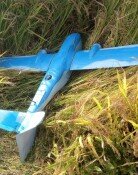Wolves are needed for balanced ecosystem
Wolves are needed for balanced ecosystem
Posted January. 26, 2015 07:10,
In the 1990s, some trees had been withered at the Yellowstone in the U.S., the worlds first national park. Scientists investigated broad leaf trees that survived. What they found in common among the trees was that the trees were older than 70 years. What happened in the 1920s? At that time, the U.S. government killed about 100,000 wolves citing that wolves pose a threat to people and livestock. Large herbivores like elk enjoyed peaceful lives in the ecosystem where wolves were gone. But the problem was that herbivores had destroyed the forest thanks to absence of top predators. Finally, the environmental authority imported 31 grey wolves from Canada in 1995 and released to the park. Facing the threat of death, herbivores had been reduced and the forest amazingly restored.
There were some reasons that had driven wolves to the verge of extinction globally. One reason was dwindling habitats, and another one, which was more critical, was hunting. Once in the past, there were too many wolves in the U.K. whose government had to set up a plan to exterminate the wild canine. French people once paid tax with wolf skins. Due to reduced natural habitats, wolves approached to the villages and people took it as a threat. During days under the Japanese colonial rule, Koreans had implemented a project to kill vermin and harmful animals, which included wolves. After gaining independence from Japan, the rat killing movement came as a deadly blow to wolves on the Korean Peninsula. Wolves ate rats killed by poisoning and suffered from the secondary poisoning.
The last time when a wild wolf was captured in Korea was in Mungyeong of South Gyeongsang Province in 1980. Since then, no wolf has been reported. If an animal has not been reported for 50 years after the last one was spotted, it is regarded as extinct. The time is not far off to announce an official extinction of Korean wolves. Against this backdrop, the Ministry of Environment, which has implemented restoration of wild animals at the brink of extinction, has finally made a decision to pursue restoration of Korean wolves.
Bringing wolves into the wild nature aims to restore the ecosystem, just as what happened in the Yellowstone. Still, there are some lingering concerns. Asiatic black bears released in Mt. Jiri appear in front of mountain climbers or villages, threating people from time to time. Bears are less intimidating since bears like to move alone. Wolves tend to move in a pack, which may pose a greater threat to mountain hikers. Despite such risks, it would be great to see wolves running on the mountains and fields of the Korean Peninsula.



![‘건강 지킴이’ 당근, 효능 높이는 섭취법[정세연의 음식처방]](https://dimg.donga.com/c/138/175/90/1/wps/NEWS/IMAGE/2026/01/18/133181291.1.jpg)



